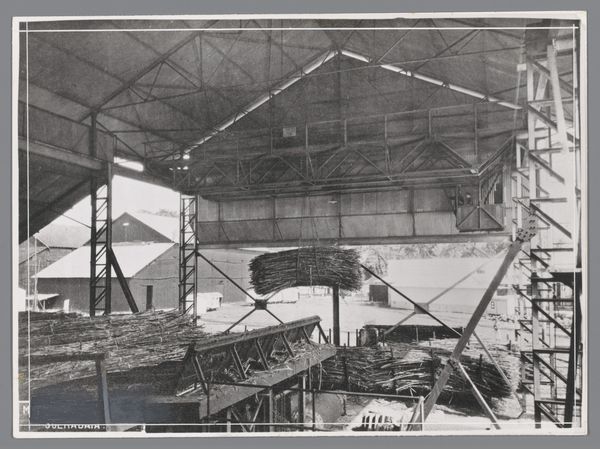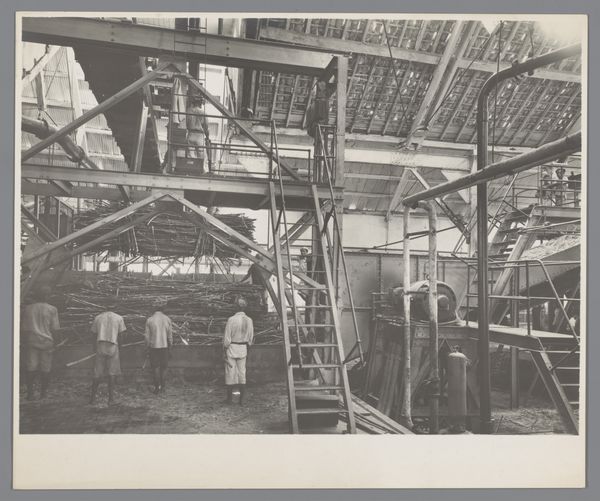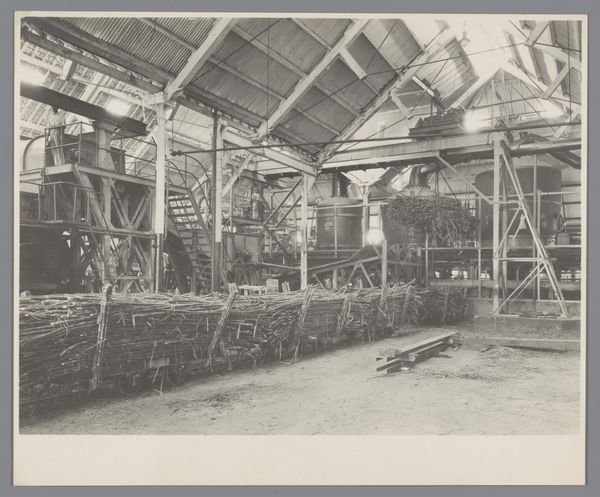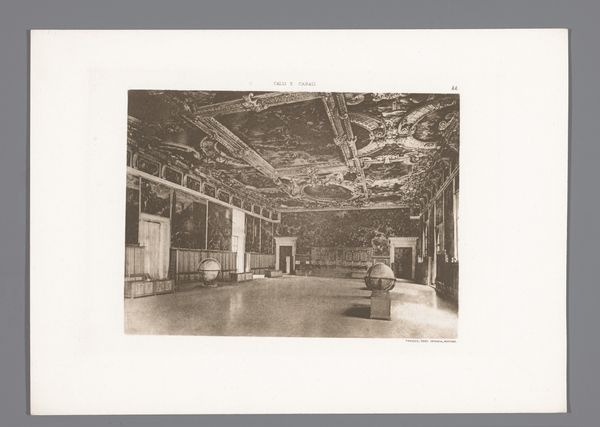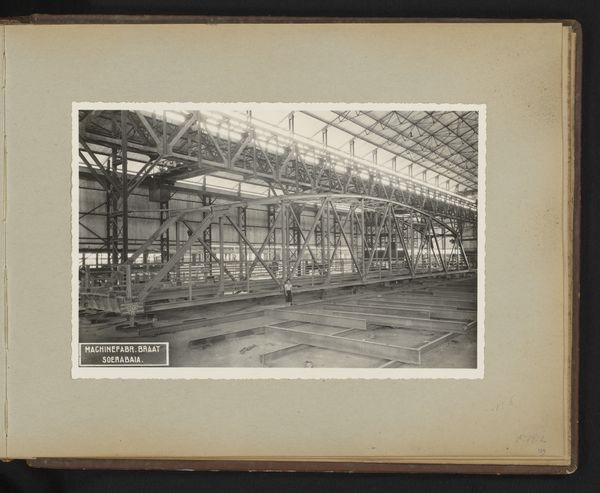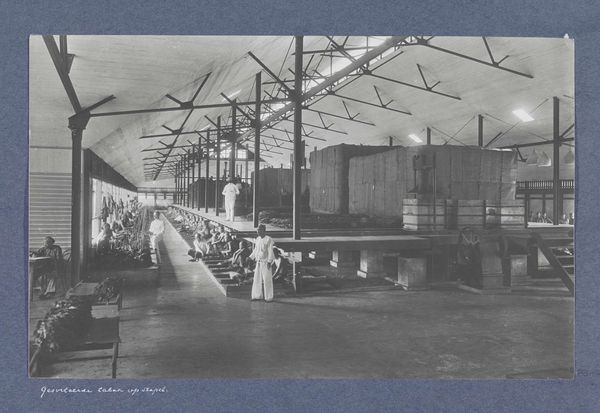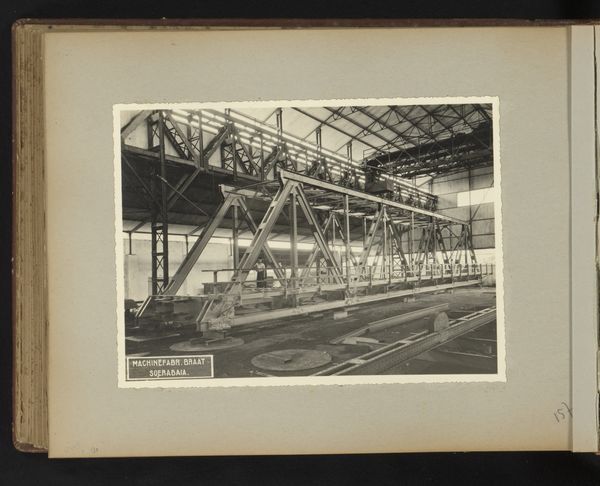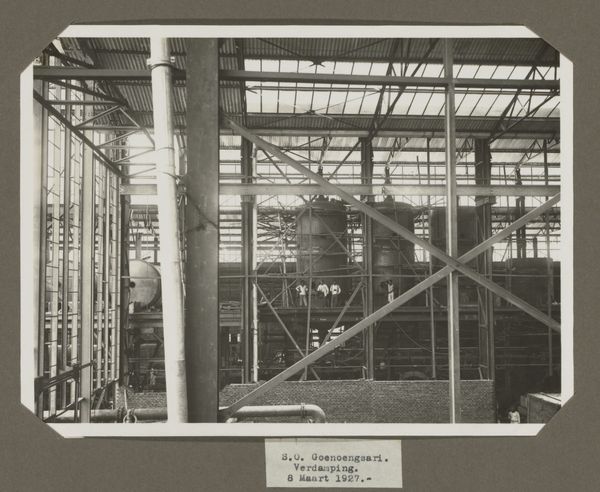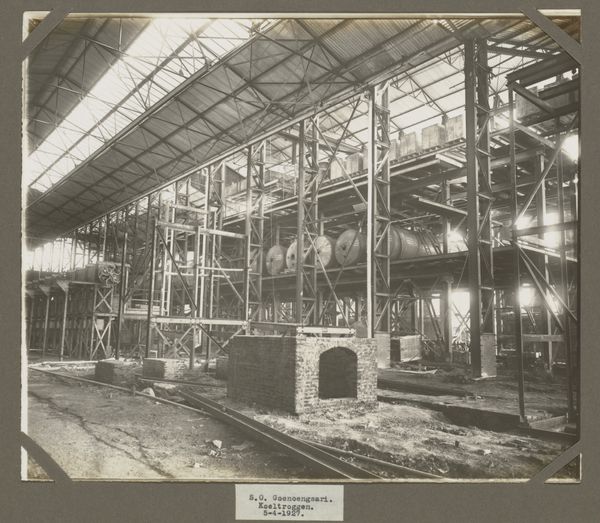
photography
#
still-life-photography
#
constructivism
#
photography
#
modernism
Dimensions: height 186 mm, width 249 mm, height 236 mm, width 305 mm
Copyright: Rijks Museum: Open Domain
Curator: Looking at this photograph, it feels austere. The stark black and white tones capture the imposing steel framework within this vast industrial space. Editor: And this is a work titled "Slibzuig-installatie t.b.v. de Kroja-werken," photographed sometime between 1940 and 1949. Its origins are somewhat shrouded in mystery; we don’t have a named artist, yet here it is displayed at the Rijksmuseum. The image features a machine or an industrial complex under construction perhaps. Knowing its possible dates, its an unsettling picture to encounter. Curator: The grid-like structure definitely draws on Constructivist principles, presenting industrial development and infrastructure. I’m particularly struck by how empty the space is around the skeletal installation – creating this real feeling of isolated monumentality. And is there a touch of modernist utopianism at play here or something darker? Editor: Yes. Visually the metal latticework has a distinct symbolism within certain social contexts. What ideology built such structures during the middle decades of the twentieth century? Or, whose labor built them. This work seems less concerned with showcasing technological advancement than reflecting on labor systems during its tumultuous epoch. I can see something that can connect art history to today. Curator: Exactly! It serves as a reminder that advancements are very often borne on the backs of marginalized communities. How might we encourage contemporary discussions about ethics, class, and access in relation to technology given the weight such structures symbolize in retrospect? Editor: I do appreciate how this image allows us to bring awareness of our shared past, the cultural and economical one. We all might want something that is more like progress in equality instead of the opposite one. It helps me to see symbols and what are their possible values in a long span of time. Curator: And, ultimately, the importance of engaging critically with symbols, past and present.
Comments
No comments
Be the first to comment and join the conversation on the ultimate creative platform.
